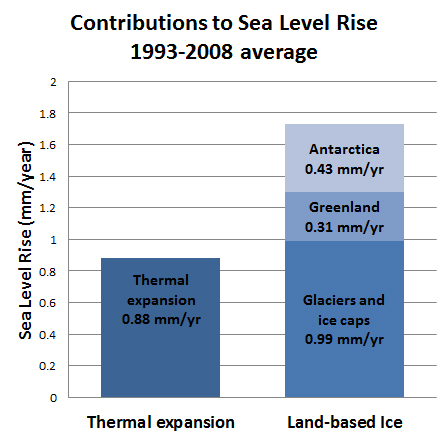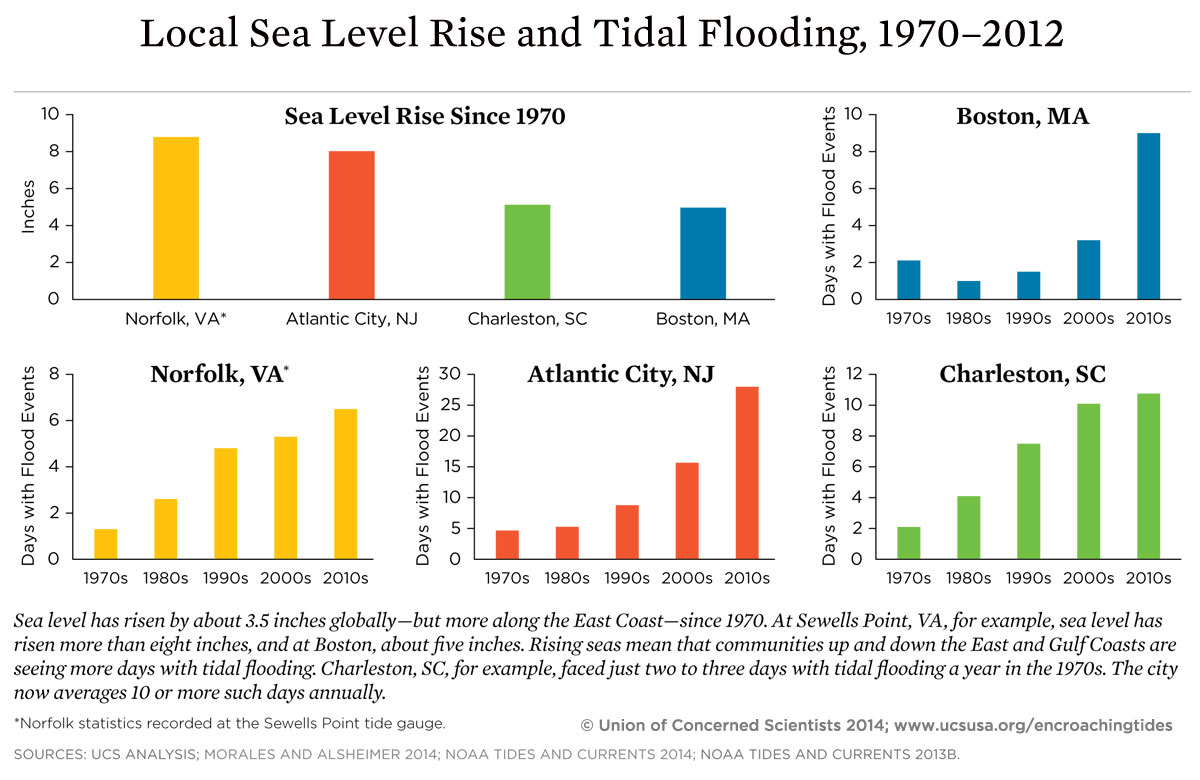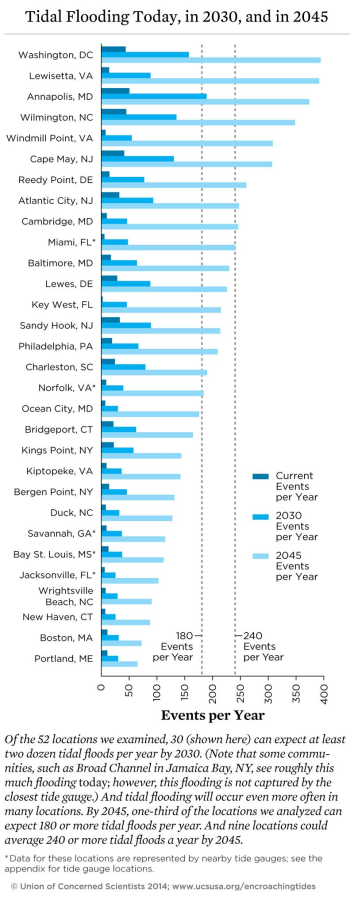Union of Concerned Scientists
This Fact Page displays text and images related to global warming and climate change
(Hover your mouse over the text below to "popup" a window with a related text.
Click on the text or image to open a new window with a detailed description.)
|
|
Contributions to Sea Level Rise (1993-2008 Average)
| Union of Concerned Scientists | | Contributions to Sea Level Rise (1993-2008 Average) |  | For most of the last century, thermal expansion from simply heating up the ocean was the main contributor to the global rise in sea level. But that’s changed in the last two decades.
A recent study shows melting of land-based ice and the resulting runoff into the sea now accounts for twice as much sea level rise as thermal expansion does. More than half of the contribution from land-based ice is from melting of alpine glaciers and ice caps, while Greenland and Antarctica (both ice sheets) account for the rest. | | | Source: UCS | | URL: http://blog.ucsusa.org/disappearing-glaciers-melting-ice-sheets-and-rising-seas-to-be-highlighted-in-forthcoming-ipcc-report-232 |
Local Sea Level Rise and Tidal Flooding, 1970–2012 (Boston, MA; Atlantic City, NJ; Norfolk, VA; Charleston, SC)
| Local Sea Level Rise and Tidal Flooding, 1970–2012 (Boston, MA; Atlantic City, NJ; Norfolk, VA; Charleston, SC) |  | Flooding during high tides—something that rarely occurred in the past—is now common in some places and is projected to grow to the point that sections of coastal cities may flood so often they would become unusable in the near future, according to a report the Union of Concerned Scientists (UCS) released today, “Encroaching Tides: How Sea Level Rise and Tidal Flooding Threaten U.S. East and Gulf Coast Communities over the Next 30 Years.” | | | Source: ucs | URL: http://www.ucsusa.org/global_warming/impacts/effects-of-tidal-flooding-and-sea-level-rise-east-coast-gulf-of-mexico#.VGjJfTTF9bI
(The text for the image(s) on this Web page was taken from the above source.) |
Local Sea Level Rise and Tidal Flooding, 1970–2012 (Boston, MA; Atlantic City, NJ; Norfolk, VA; Charleston, SC)
| Local Sea Level Rise and Tidal Flooding, 1970–2012 (Boston, MA; Atlantic City, NJ; Norfolk, VA; Charleston, SC) |  | Flooding during high tides—something that rarely occurred in the past—is now common in some places and is projected to grow to the point that sections of coastal cities may flood so often they would become unusable in the near future, according to a report the Union of Concerned Scientists (UCS) released today, “Encroaching Tides: How Sea Level Rise and Tidal Flooding Threaten U.S. East and Gulf Coast Communities over the Next 30 Years.” Today scores of coastal communities are seeing more frequent flooding during high tides. As sea level rises higher over the next 15 to 30 years, tidal flooding is expected to occur more often, cause more disruption, and even render some areas unusable — all within the time frame of a typical home mortgage. | | | Source: ucs | | URL: http://www.ucsusa.org/global_warming/impacts/effects-of-tidal-flooding-and-sea-level-rise-east-coast-gulf-of-mexico#.VGjJfTTF9bI |
|
|